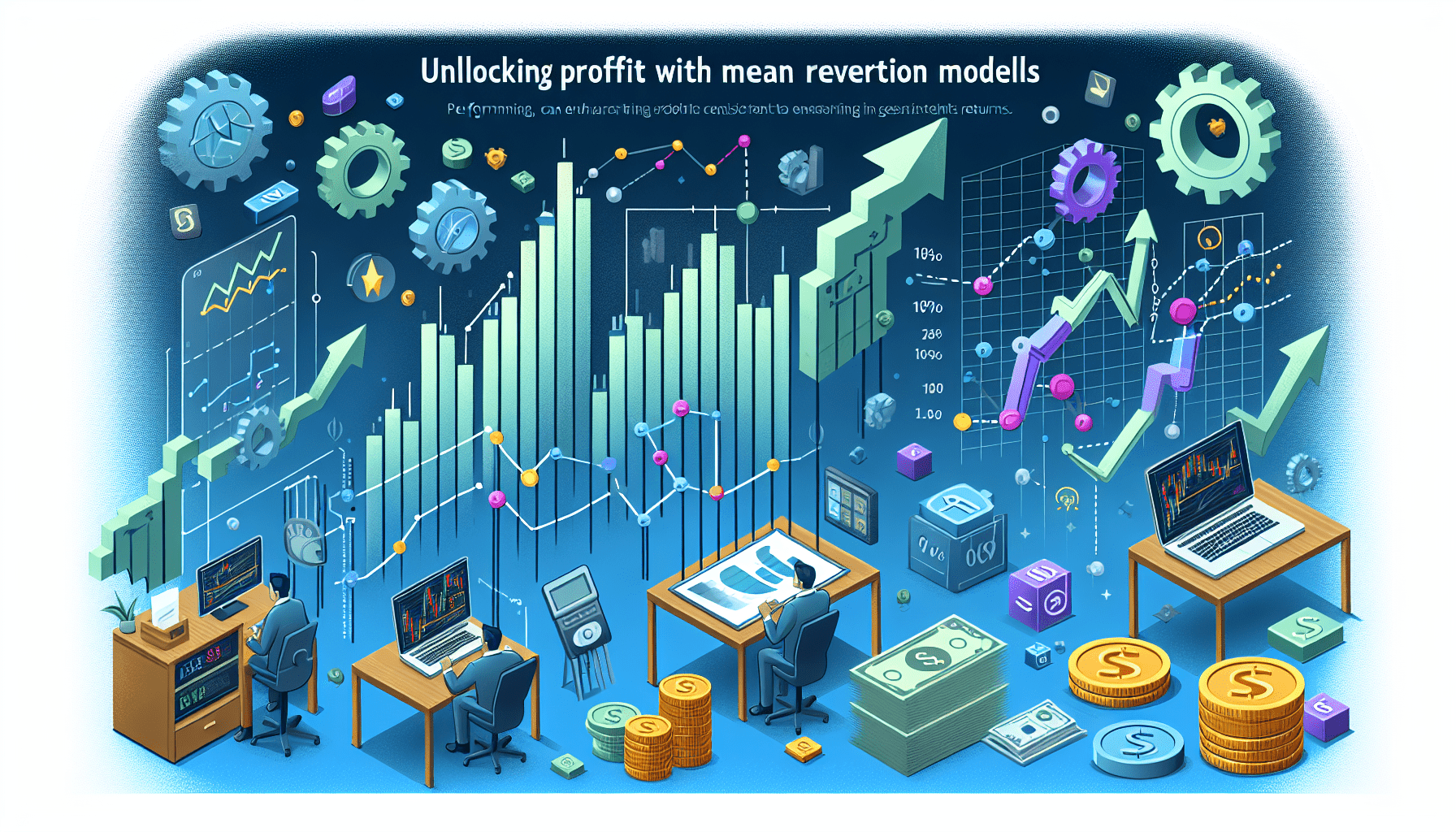Mastering Mean Reversion Models: Trading Insights Unveiled
The financial markets are a playground for various trading approaches, but one approach that has garnered significant attention is the use of mean reversion models. In this comprehensive guide, we delve deep into how these models work, why they are effective, and how you can implement them using cutting-edge trading systems and software. Whether you are a seasoned trader or a beginner, understanding these strategies can transform your approach to the market.
Understanding Mean Reversion Models
Mean reversion models are built on the assumption that asset prices tend to revert to their historical average or mean over time. This concept is not only fascinating, but it also provides traders with tangible signals to identify potential buy or sell opportunities. Essentially, if a price departs significantly from its historical average, it is likely to return to that average, thereby creating trading possibilities. In today’s market, traders can choose from a variety of mean reversion trading strategies that harness this concept effectively.
One of the major advantages of using these models is their ability to simplify the forecasting process. By focusing on the historical price movement, traders can sidestep some of the unpredictable elements of the market, making it easier to strategize. Moreover, many professionals leverage a mean reversion algorithm to automate this process, decreasing the room for manual error while enhancing speed and efficiency.
Implementing Mean Reversion Trading Strategies
There are several practical ways to integrate mean reversion models into your trading plan. For example, some traders prefer to implement a mean reversion trading system that is fully automated, letting technology do the heavy lifting. This approach is especially beneficial for those aiming to execute trades at a high frequency, ensuring that no opportunity is missed.
For beginners, leveraging proven frameworks is crucial. Many start by exploring the best mean reversion trading strategies for beginners that not only provide clear signals but also offer step-by-step guidance. As you become more comfortable with the theory and practical application, you might consider moving on to more advanced setups or even developing your own trading models. Using proper model software, such as the specialized mean reversion model software, becomes essential as these tools often reveal patterns that might not be immediately apparent.
Why Invest in Mean Reversion Model Software?
Fitness in any trading strategy comes from the perfect blend of theory and execution. The modern trading environment has led to significant innovations in software that can analyze, predict, and execute trades based on mean reversion models. Today, many experts ask, “buy mean reversion model software online?” This question is common among traders who are looking for a reliable, cost-effective solution to elevate their trading approach.
By investing in mean reversion model software, you are not just buying a tool; you are equipping yourself with a robust system that can potentially adapt to the evolving dynamics of the market. These systems are designed to quickly process large volumes of market data, identify anomalies when prices deviate from the mean, and thus, trigger trades that align with established logic. Furthermore, reviews like those found in top-rated mean reversion model software reviews provide crucial insights into the reliability and effectiveness of various platforms.
Benefits and Risks of Mean Reversion Strategies
These models offer considerable advantages when applied correctly. They help in identifying overbought or oversold market conditions, thus helping traders make decisions that are backed by statistical evidence. Additionally, with the support of advanced trading platforms, traders can implement these strategies with minimal manual intervention.
However, it is important to note that no strategy is without risk. Mean reversion trading strategies must be carefully calibrated to the specific market environment. While historical trends provide a good baseline, the market may sometimes behave unpredictably. Therefore, prudent risk management practices must accompany any algorithmic approach to ensure that potential losses are minimized.
Advanced Techniques and Customization
For traders looking to customize their approach further, the adaptability of mean reversion models is a significant advantage. Many platforms offer customizable options for a mean reversion algorithm, allowing traders to add specific filters based on volume, time, or even market sentiment data. Some professionals find this customization useful in enhancing the accuracy of the models.
Additionally, when considering where to purchase a complete trading package, many traders resort to searches like “where to purchase mean reversion trading system” to find products that suit their needs. The market is replete with options ranging from proprietary systems to open-source alternatives that can be tailored to individual trading styles.
Case Studies: Successful Implementations
Several success stories highlight the potential of mean reversion models when applied with discipline and precision. For instance, traders who invest in a reliable mean reversion algorithm and supplement it with proper risk management have seen consistent returns over time. In one notable case study, a trader using an automated mean reversion trading system managed to achieve a substantial reduction in risk exposure while optimizing trade timing.
Furthermore, platforms offering affordable mean reversion algorithm for trading have democratized access to powerful trading tools, allowing even small-scale traders to compete with larger market players. These case studies not only underscore the effectiveness of these models but also demonstrate that with the right strategy and toolset, even complex market patterns can be mastered.
Integrating Technology and Strategy
In today’s digital age, the fusion of technology and trading strategy is more critical than ever. Automated systems remove human error and enable traders to respond to market changes in real time. However, understanding the underlying mechanics remains paramount. For instance, while a mean reversion model software can crunch numbers at impressive speeds, the trader’s intuition and market experience are invaluable in fine-tuning the parameters and objectives of the model.
Moreover, as the trading ecosystem evolves, staying updated with the latest technological advancements is key. Platforms that continuously integrate new analytical tools and features can offer a significant edge. By combining data analytics with classic trading theory, traders can create a robust system that is both agile and resilient against market volatility.
Future Trends and Innovations in Mean Reversion Models
Looking ahead, the future of mean reversion models appears promising. With the rise of artificial intelligence and machine learning, these models are poised to become more sophisticated. Emerging trends suggest that future systems will not only automatically adjust their parameters based on current market conditions but also predict market movements with increased accuracy. This next generation of trading systems is expected to offer greater customization and integration with various data sources.
For those interested in keeping up with the latest advancements, regularly checking reviews and expert opinions—such as those found on sites discussing the top-rated mean reversion model software reviews—can offer valuable insights. Such resources help traders stay informed and ahead of the curve in an increasingly competitive arena.
Conclusion
Mean reversion models represent a powerful approach to understanding and capitalizing on market movements. Whether you are just starting with mean reversion trading strategies or are looking to refine a complex trading system, the principles discussed in this article provide a robust framework for success. By investing in the right tools, such as reliable mean reversion model software, and coupling them with disciplined risk management practices, you can harness the potential of these models to achieve your trading goals.
As the market evolves, so too do the strategies and technologies that underpin successful trading. Embracing innovation while grounding your approach in proven principles is the key to thriving in dynamic market conditions. Continue exploring, learning, and adapting, and you’ll soon see the tangible benefits of a well-executed mean reversion strategy.
In summary, whether your journey begins with a simple exploration of mean reversion models or advanced algorithmic trading, the insights and strategies presented here are designed to empower you. The road to trading success is paved with knowledge, technology, and a continuous drive to improve.







